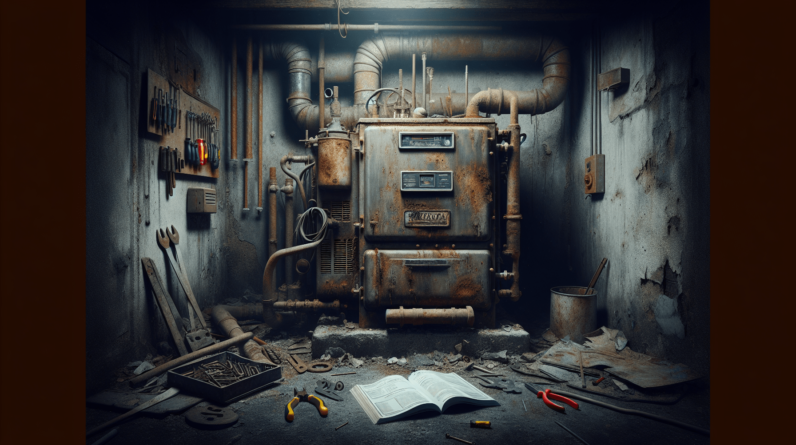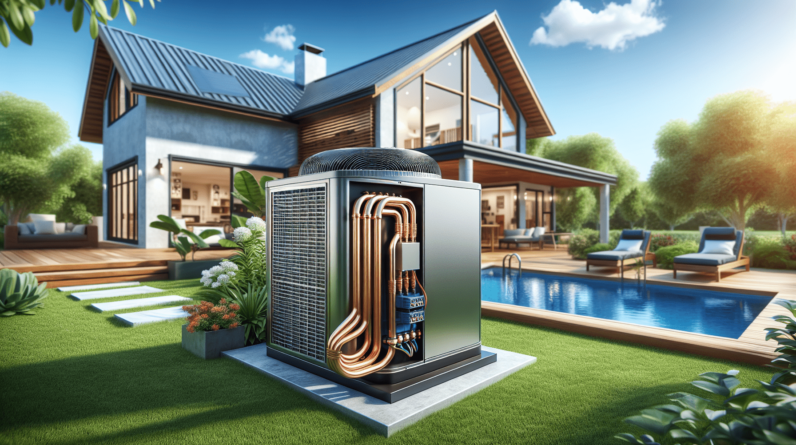
Imagine coming home after a long day and discovering a small puddle of water on your floor. At first glance, it may seem harmless, but have you ever wondered if water damage can actually cause more serious structural problems? In this article, we will explore the potential hazards of water damage and shed light on the hidden dangers that could compromise the integrity of your home. Brace yourself for some eye-opening revelations as we dive into the world of water damage and its potential impact on the very foundation of your beloved abode.
The Effects of Water Damage on Structures
When it comes to water damage, the impact on structures can be significant. Water damage can lead to cracks and weaknesses in the foundation, damage to load-bearing walls, corrosion of structural components, weakening of supporting beams and columns, and compromised structural integrity. Understanding these effects is crucial in recognizing the importance of preventing and addressing water damage in buildings.
Cracks and Weaknesses in the Foundation
One of the most concerning effects of water damage is the development of cracks and weaknesses in the foundation. Water can seep into the soil surrounding the foundation, causing the soil to expand and contract. This constant movement puts pressure on the foundation, leading to cracks and destabilization.
Additionally, hydrostatic pressure, which is the pressure exerted by water against the foundation walls, can further contribute to cracks. When water saturates the soil, it exerts a significant amount of pressure on the foundation, leading to structural weaknesses.
Furthermore, hydraulic erosion, which occurs when water flowing through the soil displaces particles, can cause voids or gaps to form beneath the foundation. As a result, the foundation loses its support, leading to potential settlement and structural damage.
Lastly, freeze-thaw cycling can exacerbate existing cracks. When water seeps into cracks in the foundation and then freezes during cold weather, it expands and enlarges the cracks. Over time, this freeze-thaw cycle can weaken the foundation and compromise its stability.
Damage to Load-Bearing Walls
Water damage can also have a detrimental impact on load-bearing walls. Load-bearing walls are responsible for supporting the weight of the structure above, and any damage to these walls can compromise the overall stability of the building.
Gypsum board and plaster, commonly used in interior walls, are highly susceptible to water damage. When water infiltrates these materials, they can deteriorate, leading to crumbling and weakening of the walls. This not only affects their structural integrity but also poses aesthetic issues.
Staining and discoloration on load-bearing walls are another visible effect of water damage. As water saturates the walls, it can cause paint to bubble and peel, leaving unsightly marks. Additionally, the presence of water can create an ideal environment for the growth of mold and mildew, further compromising the structural integrity of the walls.
Dry rot, a fungal infestation that thrives in moist conditions, is particularly damaging to load-bearing walls. It can cause the wood to decay, weaken, and lose its load-bearing capacity. Mold growth can also accompany dry rot, exacerbating the structural damage.
Efflorescence, a white powdery substance that appears on the surface of walls, is another indicator of water damage. It occurs when water evaporates from the walls, leaving behind mineral deposits. While efflorescence itself may not directly damage load-bearing walls, it is a sign of underlying moisture issues that can lead to structural problems over time.
Corrosion of Structural Components
Water damage can also result in the corrosion of structural components, especially when metals are involved. Steel reinforcement, commonly used in concrete structures, can undergo corrosion when exposed to water. Corrosion weakens the steel, reducing its load-bearing capacity and compromising the structural integrity of the building.
Rust and oxidation are common signs of metal corrosion caused by water damage. As moisture interacts with iron or steel, it initiates a chemical reaction that leads to the formation of rust. Over time, this rust can eat away at the metal, causing it to become brittle and weak.
Furthermore, water damage can weaken concrete structures through a process called “alkali-silica reaction.” When water penetrates concrete and reacts with alkali compounds, it generates a gel-like substance that can expand and crack the concrete. This deterioration undermines the structural strength of the affected components.
Structural steel can also experience deterioration due to prolonged exposure to water. Moisture accelerates the corrosion process, leading to the weakening and potential failure of these critical load-bearing elements. This degradation can be especially problematic in areas with high humidity levels or frequent water exposure.
Weakening of Supporting Beams and Columns
Water damage can weaken supporting beams and columns, further compromising the structural integrity of the building. When wooden beams absorb moisture, they can experience rot, which causes the wood to lose its strength. As the beams weaken, they become less capable of supporting the weight they were designed for.
Warped or twisted beams are another consequence of water damage. When water infiltrates wooden beams, it can cause them to swell and warp, leading to structural deformations and reduced load-bearing capacity.
Concrete supporting beams and columns are also susceptible to water damage. Cracking and splitting can occur when water penetrates the concrete and undergoes the freeze-thaw cycle. These cracks weaken the structural components, making them more prone to failure.
Moreover, the presence of water within the structural elements can lead to a loss of load-bearing capacity. Waterlogged wood and eroded concrete are unable to distribute the weight effectively, causing the building to become unstable.

Compromised Structural Integrity
Ultimately, water damage can compromise the overall structural integrity of a building. As various components suffer degradation, the building’s stability is put at risk. Without prompt and appropriate intervention, the structural damage can escalate, leading to catastrophic consequences.
Sagging or uneven floors are telltale signs of compromised structural integrity. When water damage affects the foundation, it can cause the floors to shift or sink. This unevenness not only affects the building’s aesthetics but also poses potential safety hazards.
Bowed or leaning walls are another indication of significant structural damage caused by water infiltration. When load-bearing walls are weakened, they can buckle under the pressure, resulting in visible deformations. These distortions compromise the building’s stability and require immediate attention.
Ceiling and roof damage are additional consequences of compromised structural integrity. When water infiltrates the upper levels of a building, it can cause ceilings to sag or develop cracks. Roof damage, particularly from leaks or improper drainage, can lead to structural deterioration that affects the entire building.
In severe cases, the structural damage caused by water can result in collapsing structures. Weakened foundations, load-bearing walls, and supporting components may ultimately give way, posing significant risks to occupants and necessitating major repairs or even rebuilds.
Factors That Contribute to Water Damage
Understanding the factors that contribute to water damage is essential in preventing and addressing the issue effectively. Several common sources of water damage include leaking pipes and plumbing issues, roof leaks and improper drainage, flooding and natural disasters, and moisture and humidity in the air.
Leaking Pipes and Plumbing Issues
Leaking pipes and plumbing issues are frequent culprits of water damage in buildings. Whether due to age, corrosion, or damage, pipes can develop leaks that result in water infiltration. These leaks can be slow and gradual, causing concealed damage over time, or sudden and significant, leading to immediate issues.
Additionally, plumbing problems such as faulty pipe joints and connections can contribute to water damage. When seals or connections fail, water can escape and saturate surrounding areas, leading to structural and cosmetic damage.
Clogs and blockages within the plumbing system can also cause water damage. When drains are obstructed, water can back up and overflow into the building, posing risks to the structural components.
Furthermore, backflow and sewage issues can result in water damage. When the sewage system encounters problems and starts backing up into buildings, water contaminated with hazardous substances can infiltrate the structure, causing severe damage and health hazards.
Roof Leaks and Improper Drainage
Roof leaks and improper drainage can have devastating consequences for a building. Missing or damaged shingles can allow rainwater to penetrate the roof, leading to water damage within the structure. The longer such leaks go unnoticed, the more extensive the damage becomes.
Cracked or failed flashing around chimneys, vents, and skylights can also contribute to roof leaks. Flashing acts as a seal to prevent water from infiltrating the vulnerable areas of the roof. When it deteriorates or becomes damaged, water can seep through and result in water damage.
Clogged gutters and downspouts are another factor that can contribute to water damage. When gutters are obstructed, rainwater cannot flow away from the roof properly, causing it to pool or overflow. This excess water can make its way into the building, causing damage to ceilings, walls, and other structural components.
Improperly installed roofing systems are also a concern. If not correctly installed, roofs may lack the necessary waterproofing and drainage features, making them more susceptible to water damage. Insufficient underlayment or inadequate flashing can compromise the roof’s ability to withstand water infiltration.
Flooding and Natural Disasters
Flooding and natural disasters can bring about substantial water damage to structures. Whether caused by heavy rains, hurricanes, or overflowing rivers, flooding can quickly inundate buildings, posing significant risks to their structural integrity.
During floods, water can penetrate the foundation and rise through the lower levels of the building. This prolonged exposure to water can lead to severe damage, including compromised foundations, weakened walls, and collapsed structures.
Natural disasters, such as hurricanes and storms, can further exacerbate water damage. High winds and heavy rainfall can cause roofs to fail, allowing water to pour into the building. These intense weather events often result in widespread damage and pose severe threats to buildings and their occupants.
Moisture and Humidity in the Air
Moisture and humidity in the air can contribute to ongoing water damage within a building. When the air carries high levels of moisture, it can condense on surfaces and cause water damage over time.
Condensation becomes a concern when vapor barriers, which prevent moisture transfer, are lacking or compromised. Without proper vapor barriers, warm and moist indoor air can come into contact with cold surfaces, leading to condensation and subsequent water damage.
Inadequate ventilation and poor air circulation within a building can also contribute to moisture issues. Stagnant air traps moisture, creating an environment conducive to water damage. Effective ventilation systems, including exhaust fans and proper air circulation, are vital in maintaining a dry and healthy indoor environment.
High humidity levels are another factor that can contribute to water damage. When humidity exceeds recommended levels, excess moisture can permeate building materials, leading to structural degradation over time. Monitoring and controlling humidity levels are crucial in preventing ongoing water damage.
Water vapor absorption by materials is yet another consideration. Some materials, such as wood and drywall, have a natural affinity for moisture. When exposed to high humidity levels, these materials can absorb water vapor, leading to swelling, warping, and deterioration.
In conclusion, water damage can have significant effects on structures. From cracks and weaknesses in the foundation to compromised structural integrity, the consequences of water damage can be extensive. Understanding the factors that contribute to water damage, such as leaking pipes, roof issues, flooding, and high humidity, is crucial in preventing and addressing water damage effectively. By recognizing these effects and implementing appropriate preventive measures and prompt repairs, the structural integrity of buildings can be preserved, ensuring the safety and longevity of the structures for years to come.






